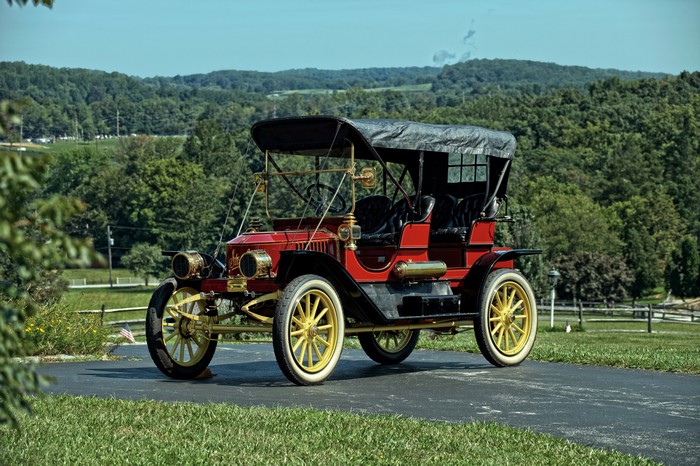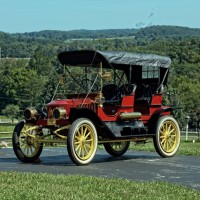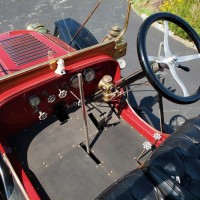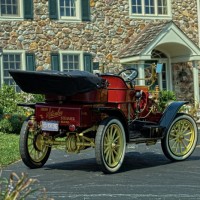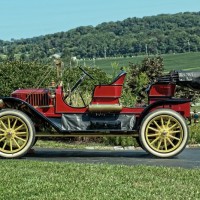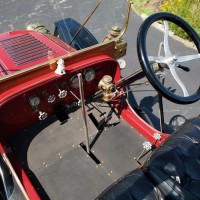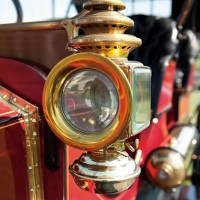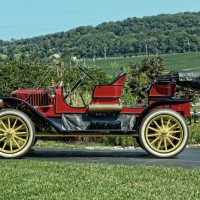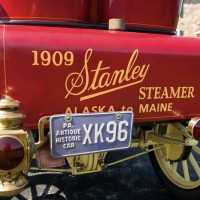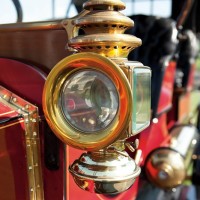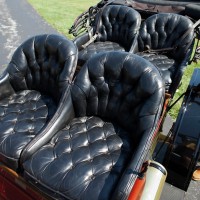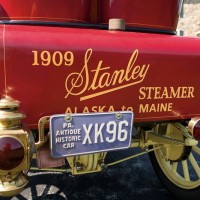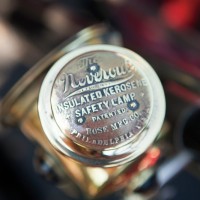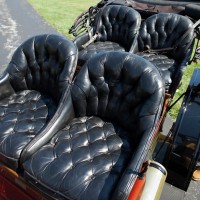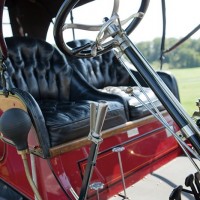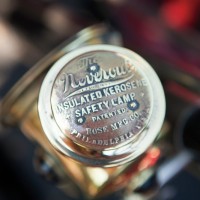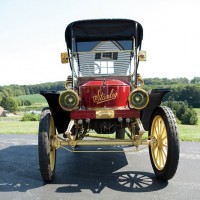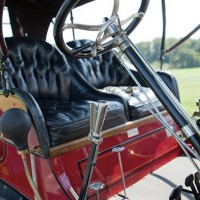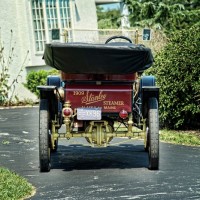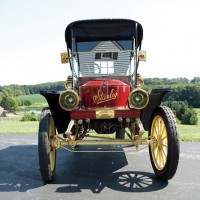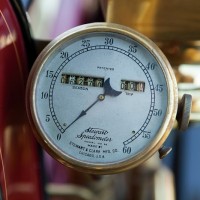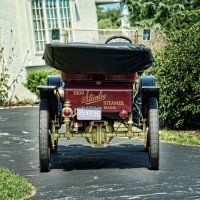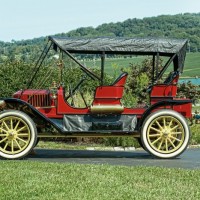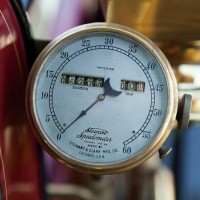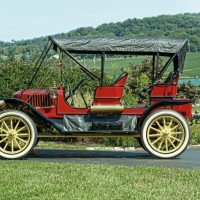SCM Analysis
Detailing
| Vehicle: | 1909 Stanley Model R Roadster |
| Number Produced: | 11,000 |
| Original List Price: | $1,440 |
| Club Info: | The Steam Car Club |
| Website: | http://www.stanleyregister.net |
| Alternatives: | Doble Model B, 1908 White Model K |
This car, Lot 249, sold for $121,000, including buyer’s premium, at RM’s Hershey auction on October 11, 2012.
“I used to sell steam-powered automobiles. Until someone went and invented one,” sang con artist Professor Harold Hill in “The Music Man.” And invent them they did, as about 125 American manufacturers put their foot in the emerging steam-powered car market.
In the early 1900s, the internal combustion engine was plagued with reliability issues, was difficult to start if not in perfect mechanical order, was noisy, and hand-cranking the engine often resulted in a broken arm. On the other hand, the steam engine offered simplicity, with only 13 moving engine parts and a total of 37 parts for the entire car. The steam engine offered power on demand without a clutch to worry about. Increased speed was generated by simply setting the throttle. In addition, they were fast, as Fred Marriott set several land-speed records in 1906 driving the “Rocket Steamer.”
As an interesting factoid, the first dedicated police car in America was a 1902 Stanley that the Boston Police Department purchased. One problem: Not one cop in the department could drive, so they had to hire a chauffeur to chase the bad guys.
A slow, risky start
The biggest disadvantage to the steam engine was, of course, the starting process, which was stated to be 20 minutes in the Stanley brochure, but 30 minutes or more was more realistic.
A blow torch replaced the ignition key, as the pilot light required igniting and the boiler had to be brought up to proper temperature. The pilot light was fed with white gasoline and the boiler with kerosene, so waving a blow torch close to these ingredients was a recipe for disaster.
Steam-car competitors stated that you were not sure whether you were going straight ahead or straight up, although there were no reported incidents of steam car boilers exploding. The bodies were constructed of wood, and the pilot light could catch the frame on fire, but as Jay Leno was reported to have stated, “You just drive faster to put out the fire!”
A new car with old parts
During 25 years of production, the Stanley Motor Carriage Company produced nearly 11,000 vehicles with 85 different models. The early cars had a distinctive coffin nose, as the exhaust steam was vented externally. In 1914, they installed a condenser that looked like a radiator and reused the exhaust steam. However, this was also the era when Cadillac’s electric starter — introduced in 1912 — took hold and spelled the end of the steam car era.
As noted in the auction description, the 1909 Stanley Model R offered was constructed in 1995 and 1996 “using as many original parts as possible.”
In 2010, RM sold a Stanley Model E2, which has the smaller 10-horsepower boiler, for $63,250. It had been rebuilt in 1973 with a new wood body but was now in need of a new boiler and burner. It had an inappropriate chassis tag, and its origin was unknown.
Okay, what is the difference between these two Stanleys? One was recently driven from Alaska to Maine and the other has not been steamed in years — and had a long list of needs. Stanleys often seem to be akin to George Washington’s ax with a replacement head and new handle, so given the choice, the Model R offered here was good to go without additional expense. To my eye, it was the better buy. ?
(Introductory description courtesy of RM Auctions.)
